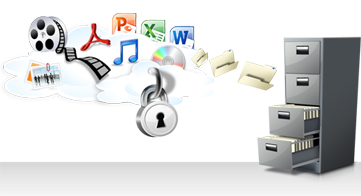Digital Asset Management—Control Your Assets: Control Your Brand
 In the digital age, communication is fast. Customers are armed with instant information using smart phones, tablets and wifi internet access. Keeping up with them requires collaboration and teamwork. In addition, the digital age has provided us with the means of communicating without boundary. Corporate marketing can enlist the support of graphic designers, agencies, PR firms, photographers, copywriters, analysts and marketing professionals around the globe to get their message out with lightning speed. Digital assets can be used and repurposed for multiple projects over time without having to reinvent or re-invest for every new project.
In the digital age, communication is fast. Customers are armed with instant information using smart phones, tablets and wifi internet access. Keeping up with them requires collaboration and teamwork. In addition, the digital age has provided us with the means of communicating without boundary. Corporate marketing can enlist the support of graphic designers, agencies, PR firms, photographers, copywriters, analysts and marketing professionals around the globe to get their message out with lightning speed. Digital assets can be used and repurposed for multiple projects over time without having to reinvent or re-invest for every new project.
So how do we ensure that our valuable digital assets are accessible to those who need them? It is easy to lose control of the brand when working in a fast-paced, self-serve environment. Protecting and organizing the images, content and creative that we have amassed is time consuming and costly, requiring digital storage, database management and distribution technology. Many companies struggle with files located on multiple servers, variation in naming convention, content quality control and security. Not to mention finding a way to quickly locate and distribute the assets when they are needed. It doesn’t help to have the assets if they cannot be located and repurposed. Digital Asset Management (DAM) programs can solve all of these problems and enable companies to reduce administrative woes, time delays and costly IT resources.
What is Digital Asset Management?
Digital files can be images, graphics, logos, animations, video clips, audio clips, presentations, documents, content and a number of other digital file formats. A digital file becomes an asset when its environment contains additional information outside the file. This additional information is called metadata. Metadata allows assets to be catalogued, searched and retrieved for use. This “tagging” of the digital file can make the search process faster and easier. Metadata tags can be user friendly, product specific and cross functional.
A Digital Asset Management (DAM) system is a combination of software, hardware and professional services that provide a central location for storing, managing and accessing digital assets. Normally available using a web-based secure portal, anyone with access to the DAM system can get quick access to approved and available material. These assets can be downloaded and repurposed for new projects. Because of the metadata tags, searching is easy. An image that was developed for use in an annual report can be tagged with content-specific data so the image can be found based on the need of the new project even if the designer doesn’t have a copy of the annual report where the image was first used. Finding and reusing these images can save hundreds of dollars in photography fees. In addition, the corporate marketing team controls who can access, what they have access to and how the files are delivered. No more worry that a bad image or a low resolution version of a file will get into the market and undermine your best efforts at protecting your brand.
Four reasons to consider a Digital Asset Management solution:
1. Organize all digital assets into a central location, regardless of file type.
• No more digital scavenger hunts looking through multiple versions of the same file, located in different data silos.
• Downloadable files in the database are consistent, latest versions and approved.
• Storage space is reduced by having only one place for files.
• Users can readily access relevant material for projects and tasks.
• Digital material can be easily shared between departments, divisions, agencies and collaborators anytime and anywhere.
2. Anytime access to digital assets allowing a quick response to the market.
• Administrator controls assets, permissions and workflows. Each user can find and use what they need for their specific projects.
• New assets are named, color-corrected, tagged and assigned before becoming live. Association of the assets using role-based permissions ensures management that the images and files are correct.
• User can choose file format for download to fit their need.
• Up front control = no delays in the process.
3. Provide the right format for the intended use.
• Maximize the value of the digital asset by starting with the highest quality resolution that would be required. This ensures the image will be right no matter what the end application.
• Downloadable file resolution can be adjusted to application need. No need to access larger files than necessary.
• Low resolution FPOs can be linked to high res files to allow designers to work with smaller, faster file formats until ready for final output.
• Reduce proofing and approval process because the team can trust the image quality.
4. Full brand control regardless of platform.
• Only approved users can gain access to files.
• Graphic standards are applied to the asset before placement in the library. No worry that corporate guidelines will be misinterpreted.
• Hosted assets can include all digital file types — images, logos, videos, audio files, document files, creative files, etc.
• Updates are applied immediately and consistently.
• Uploads/downloads, user activity and storage space status are tracked, date stamped and reported.